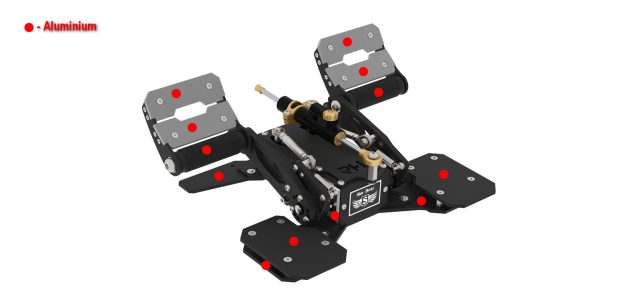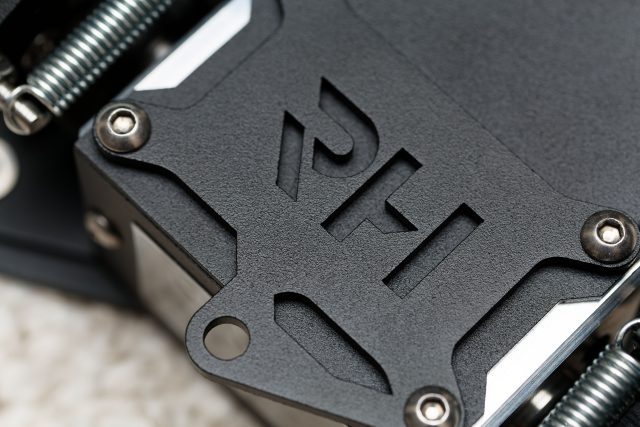

Slaw Device is back: RH Rotor Pedals rule the skies—for $475
source link: https://arstechnica.com/gaming/2022/04/slaw-device-is-back-rh-rotor-pedals-rule-the-skies-for-475/
Go to the source link to view the article. You can view the picture content, updated content and better typesetting reading experience. If the link is broken, please click the button below to view the snapshot at that time.

A tale of two pedals
This isn’t my first piece of Slaw Device hardware. I originally fell in love with Oziabło’s work in early 2015 when I ordered a set of Slaw Device BF-109s. These pedals proved to be an excellent addition to my simpit, but I wasn’t quite satisfied with the stirrup-style foot arrangement, so in mid-2016, I upgraded to a new set of Slaw Device RX Vipers. In the almost six years since, those RX Vipers have been the perfect interface device—they remain as precise today as they were the day I bought them, and other than having to replace the main tension spring a few times and occasionally torque down a couple of screws, the pedals have been maintenance-free.
That’s why I haven’t actually purchased the set of Slaw Device RH Rotors I’m reviewing—I’m still completely satisfied with my RX Vipers. However, as amazing as they are, the RX Vipers are still very much designed for use while simming in fixed-wing aircraft (or spaceships—they work really well for spaceships, too!).
As any real pilot can tell you—and I am nowhere close to being a real pilot, though I do have a bit of F/A-18 time in my logbook—helicopters have different controls than fixed-wing aircraft. Instead of a stick and a throttle, you have a collective and a cyclic (and also a throttle). And instead of rudder pedals that swing your rudder back and forth, you have anti-torque pedals that change the pitch of your tail rotor’s blades. The effect on the aircraft is largely the same—the pedals control your yaw—but the mechanism and the feel of the controls are very different.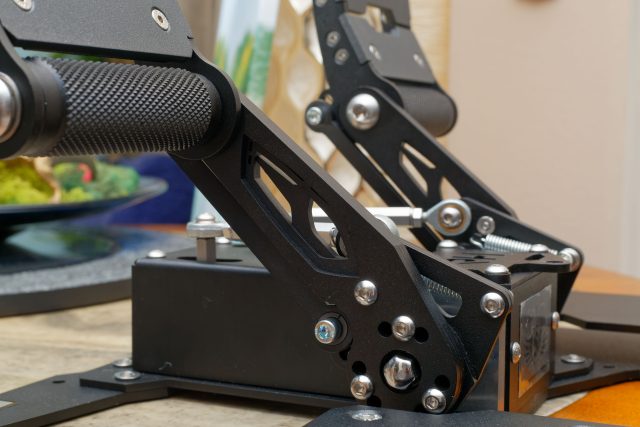
The RH Rotors and why they are the way they are
Advertisement
There are some differences in how fixed-wing and rotorcraft pedals feel, too. Unlike fixed-wing pedals, helicopter pedals typically don’t have any tensioning to cause them to re-center when you stop applying pressure to one side or the other. They also typically don’t have a strong center detent (that is, the "bump" you feel when the pedals pass through their center position). This is because rotary wing flight requires you to constantly make fine adjustments to all axes of rotation, including yaw, and sometimes you need to hold off-center positions with the controls to fly how you want.
There’s another difference that may or may not feel significant to you: Fixed-wing aircraft pedals typically engage along a single plane, sliding backward and forward without traveling up or down. (They pivot around the Z axis and move forward and backward in a horizontal line along +X and -X.) Rotorcraft pedals, on the other hand, tend to be hinged at the bottom and engage by rotating forward and down (they pivot around their Y axis and move in an arc in both +X/-X and also +Z/-Z). This is one of the biggest differences between the RH Rotors and previous Slaw Device pedals like the RX Vipers.
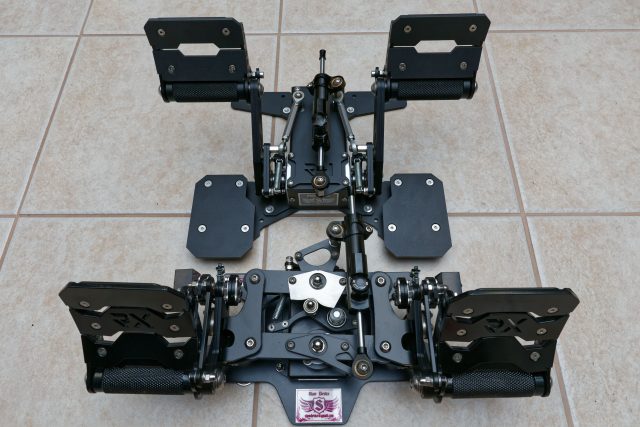
And if you want to go full rotorcraft and set the RH Rotors up to mirror helicopter-style controls, you absolutely can. Pop the dust cover off, remove the centering spring, dial up your hydraulic damper (sold separately) so that the considerable weight of the actual left and right pedals is suitably counterbalanced, and you wind up with pedals you can set in any position with light toe pressure and which will stay in the exact position where your toes put them.
Advertisement
However, designer Oziabło explained to Ars that while the RH Rotors can be made to feel and operate like rotorcraft pedals, they’re designed to work comfortably in any role, from helicopters to jets to spacecraft. "There was no task to create pedals that will copy real pedals," he wrote to Ars. "Therefore, it makes no sense to compare these pedals with real ones."
When I asked Oziabło about the design process behind the RH Rotors, he said, "At the very beginning, I wanted to create pedals for helicopters, like the McDonnell Douglas AH-64 Apache rudder pedals. But only two letters remained from this idea in the name of the RH—Rudder, Helicopter. And later I abandoned this idea—or, more precisely, such a restriction. The pedals were created as a universal convenient device."
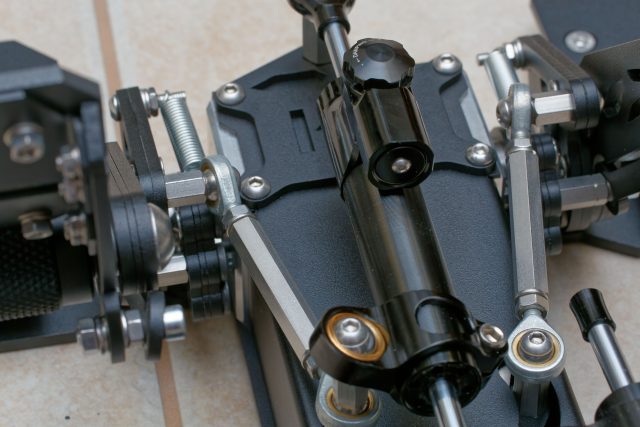
Page:
Recommend
-
 7
7
README.md turbinelabs/rotor
-
 10
10
The Scandalous History of the Last Rotor Cipher Machine The HX-63 cipher machine is an electromechanical, rotor-based system designed and built by Crypto AG.The machine uses nine rotors [center right] to encrypt messages. A dual...
-
 5
5
Audi grandsphere concept removes steering wheel, pedals, displays ...
-
 10
10
Redshift’s LED bike pedals claim to keep cyclists safer than regular lights 'Up to 57%' more visible than plain old bike lights...
-
 5
5
Magnus Effect Propels This Flettner Rotor Boat The Magnus effect is a interesting and useful phenomena. [James Whomsley] from [Project Air] decided to put it to work on a small radio-controlle...
-
 6
6
DaVinci-Style Drone With 600-Year-Old Screw Rotor Design Actually Flies The tiny aircraft was engineered by a team of students at the University of Maryland. By...
-
 11
11
Using foot pedals for modifier keys in Linux 20 Oct 2014 Update 2016-07-23: Updated the format of the udev rules for recent Linux distributions (in Ubuntu since at least 16.04, possibly earlier), thanks to an an...
-
 13
13
April 22, 2022 report ...
-
 3
3
Rule the skies this summer with these two drones, on sale for more than half off
-
 4
4
Scorpion8-rotor 的已知明文攻击以及唯密文攻击Created2023-02-28|U...
About Joyk
Aggregate valuable and interesting links.
Joyk means Joy of geeK
